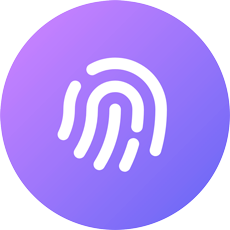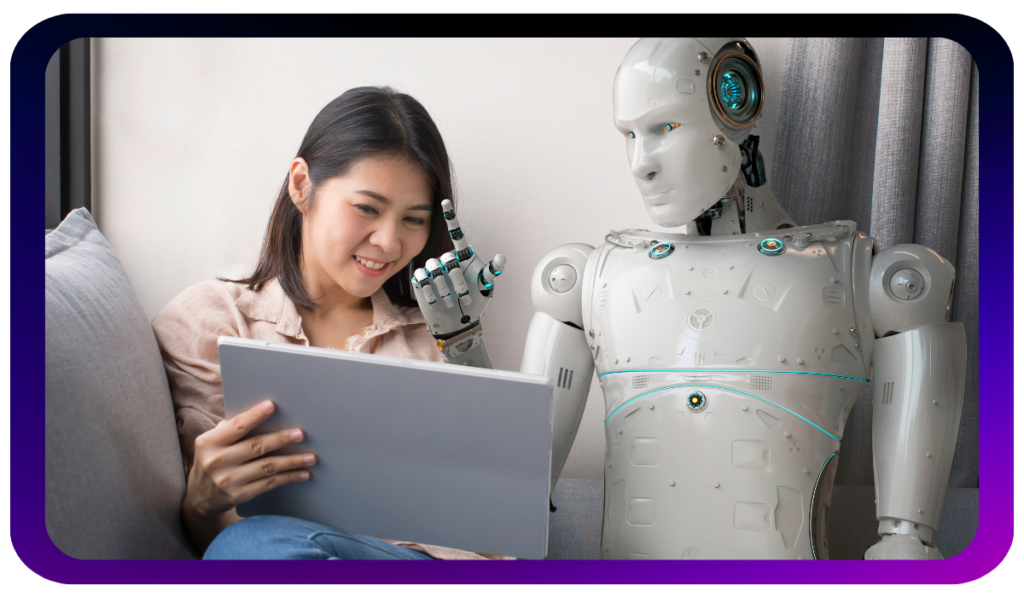AI detection software analyzes writing patterns to determine whether a piece was written by a human or generated by a machine. Using techniques like perplexity, burstiness, and stylometry, these tools detect telltale signs of AI—such as overly predictable phrasing or uniform sentence structure.
In this guide, we’ll break down exactly how it works and what red flags you need to watch out for.
What Is AI Detection Software?

As artificial intelligence becomes increasingly integrated into the way we write, communicate, and publish content, the need to distinguish between human-written and machine-generated text has grown significantly. That’s where AI detection software comes into play.
AI detection software is designed to detect AI writing content produced by large language models (LLMs) such as GPT-3, GPT-4, Claude, and others.
These tools analyze written text to determine the likelihood that it was created by a human versus an AI. They’re especially prevalent in sectors where authenticity, originality, and ethical standards matter—think academia, journalism, corporate communication, and SEO content strategy.
Who Uses AI Detection Tools—and Why
AI detection has moved beyond a tech novelty and is now actively used across various industries with clear purpose.
- Educators: Academic institutions use AI content detection tools to preserve academic integrity. As students increasingly use generative AI to draft essays or answer prompts, schools rely on detectors to flag potential misuse.
- Businesses and Brands: For companies, especially those building trust through content, AI-written material may not align with their voice or values. Detecting AI content helps them uphold brand consistency and originality.
- SEO Professionals and Content Creators: Google’s algorithms evolve constantly, and mass-produced AI content can risk penalties. AI detection tools assist SEO teams in gauging whether their content might be flagged as low-quality or inauthentic.
How AI Detection Software Works – Under the Hood
Understanding how AI detection works starts with exploring the sophisticated algorithms and language science behind these systems.
Key Algorithms & Machine Learning Techniques Used
Developers build most AI writing detection tools using a blend of machine learning models and statistical techniques.
- Supervised Classification Models: These are trained on large corpora labeled as “human-written” or “AI-generated.” The model learns from patterns in grammar, structure, and vocabulary to classify new content.
- Stylometry: This involves analyzing linguistic features such as word frequency, sentence length, and punctuation usage. Stylometric analysis helps flag the overly consistent and polished structure common in AI text.
- Text Entropy and Predictive Probability: AI detection software often measures how predictable a given sentence or paragraph is. AI models write by predicting the next token (word or part of a word), so their output tends to be more statistically “smooth” and less surprising than human writing.
- Neural Networks and Transformers: Advanced detection tools use deep learning—particularly transformer models—to compare text against known output from AI models. These networks can spot the “fingerprint” of AI text more reliably than traditional models.
What Is Perplexity and Why Does It Matter?
A foundational concept in AI detection is perplexity.
Perplexity measures how well a language model predicts a sequence of words. Low perplexity means the text is highly predictable—an indicator that it may have been written by a language model. Human writing, on the other hand, tends to be more varied and surprising, resulting in higher perplexity scores.
For example:
- AI-generated text: “The capital of France is Paris. It is known for the Eiffel Tower and delicious cuisine.”
- Human-written text: “While wandering through the cobblestone streets of Paris, I stumbled upon a tiny café tucked behind Notre-Dame—no sign, no menu, just magic.”
The first is generic and predictable. The second has higher perplexity due to its unique structure and unexpected phrasing.
What Is Burstiness and How It’s Detected?
Burstiness refers to the variation in sentence length, tone, and complexity within a text. Human writers naturally vary their style—mixing short sentences with long, using rhetorical devices, changing tone midstream.
AI text, especially in its raw form, often exhibits low burstiness—its sentences tend to be similar in length and follow a formal pattern. AI detection tools look for this stylistic monotony as a red flag.
Here’s a quick example:
- Low burstiness (likely AI): “Content creation is important. It improves brand visibility. It drives engagement.”
- High burstiness (likely human): “Content creation matters—not just for visibility, but for connection. Think about it: when was the last time a sterile paragraph made you click ‘subscribe’?”
→ To learn more about how AI Detection Score works, click here.
Common Red Flags That Trigger AI Detection
Understanding what raises suspicion in AI detection tools can help content creators craft more authentic, engaging material—whether starting from scratch or editing AI drafts.
Repetitive Structure & Phrasing
AI often leans on familiar sentence constructions and transitional phrases, like:
- “In conclusion…”
- “It is important to note that…”
- “This demonstrates that…”
While not inherently wrong, excessive use of these patterns can make your content feel templated—something AI detectors catch quickly.
Lack of Personal Experience or Original Insight
One of the telltale signs of AI writing is the absence of lived experience or emotional nuance. AI can summarize facts, but it doesn’t have a life to draw from. If your text feels detached or overly general, it may raise red flags.
Consider this contrast:
- AI: “Gardening is a relaxing activity enjoyed by many people.”
- Human: “After a long week, there’s nothing like sinking your hands into the soil and watching your tomatoes finally ripen.”
Too Perfect Grammar & Flow
Ironically, being “too polished” can work against AI-generated content. Detectors pick up on unbroken grammar, lack of contractions, and uniform sentence construction, which can feel robotic. Most human writing includes quirks—interjections, half-thoughts, and slang—that AI tends to avoid.
Limitations of AI Detection Software
As advanced as these tools are, AI detection software isn’t infallible.
False Positives in Human-Written Text
One major concern is misclassification. Creative writers, ESL speakers, or technical professionals—who may naturally write in a structured or formal style—sometimes get falsely flagged as AI-generated.
This creates challenges in education and publishing, where real people might be penalized unfairly. It’s a reminder that detection tools should be used in context, not as a sole authority.
Difficulty Detecting Lightly Edited AI Content
Ironically, light human editing often fools even the best AI detection software. By rewording a few sentences, adding personality, or varying structure, AI-generated content can slip through undetected. This gray zone complicates questions of authorship, especially when AI is used as a “writing assistant” rather than a ghostwriter.
How AI Humanizers Refine Text to Bypass Detection

The Role of Refinement in Beating AI Detection
AI humanizers tools like Walter Writes AI are specifically designed to help writers refine AI-generated content so it feels and reads like a genuine human voice.
Walter Writes AI doesn’t just paraphrase. It enhances your content by:
- Varying sentence lengths
- Inserting idioms, rhetorical questions, and real-sounding expressions
- Reducing the detectable “AI signature” while keeping meaning intact
This goes far beyond surface-level editing. Whether you’re writing essays or blog posts, humanizing AI content can help you stay credible.
How It Balances Authenticity & Readability
Walter Writes AI uses advanced heuristics and stylistic rewriting to preserve readability, SEO structure, and tone—while injecting enough human unpredictability to pass AI detectors.
It’s particularly useful for:
- SEO professionals who want AI-boosted content that ranks without triggering detection
- Writers looking to polish rough AI drafts with a natural touch
- Educators and students navigating the ethical gray area of AI-assisted writing
The result? Engaging, personality-driven content that doesn’t trip red flags.
Conclusion – Understanding & Navigating AI Detection
As generative AI tools continue to evolve, so will AI detection algorithms. We’re entering an arms race of sorts—AI writers get smarter, and so do the systems built to identify them.
For writers, content creators, and businesses, the best path forward is to understand the mechanics of AI detection while embracing ethical, creative collaboration between humans and machines.
AI detection software offers valuable insight—but it’s not a final judge. Understanding how it works, what patterns it flags, and where it fails allows you to strategically improve your writing, whether you’re starting from scratch or refining AI-generated drafts.
If you’re working with AI content, don’t just run it through a basic editor.
Use tools like Walter Writes AI to add depth, flow, and voice. It’s not about gaming the system—it’s about creating content that connects with people while staying smart about algorithms.









